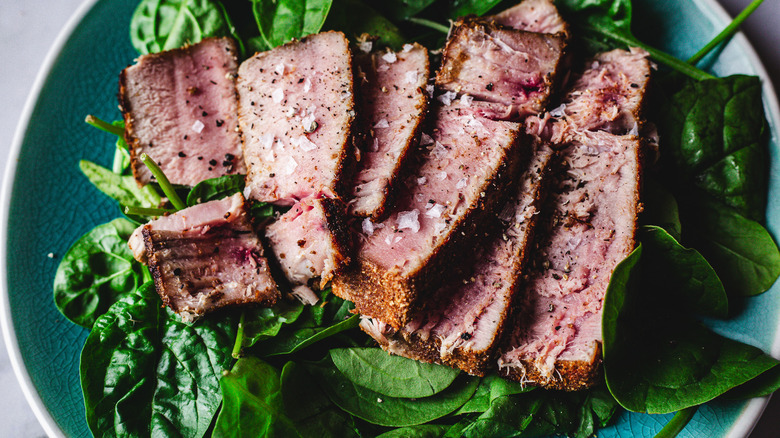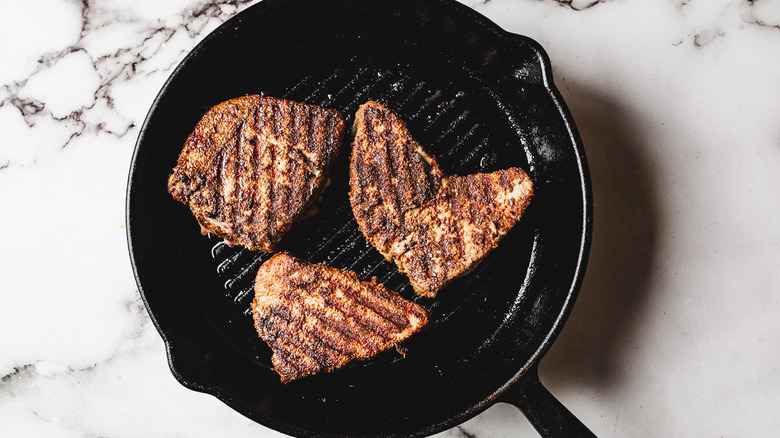The Addition Of Cayenne Gives Your Tuna Steak's Dry Rub A Spicy Finish
A piece of advice that we stand by is to never underestimate the power of a dry rub. Although it might not penetrate deep into protein like a marinade, a dry rub still works wonders for texture and flavor. In fact, the humble rub might just be one of the best ways to go about preparing a simple tuna steak. Not only can coating the filets encourage a crisply caramelized crust to form while still maintaining tenderness, but a good dry rub can also level up flavor, especially when a touch of cayenne is involved.
Regardless of the variety, fresh tuna tends to be relatively mild tasting. As a result, it makes the perfect canvas for building flavor. That said, because it can have a savory quality, it fares particularly well with bolder kinds of seasonings. This is where cayenne comes in. When worked into a dry rub destined to coat tuna steaks, fiery and fruity cayenne powder imparts loads of complexity. It also has a hand in balancing the fish's richness. Since tuna is considered an oily or fatty fish, a hot spice like cayenne counters its decadence by giving the steaks a pleasantly peppery finish.
What can we say? Able to improve the texture, flavor, and even aesthetics, a cayenne-laced dry rub is just the upgrade that tuna steaks need.
What to remember when punching up a dry rub with cayenne
Not all cayenne powders are the same, so it's worth seeking out something of quality. Ideally, a jar of the rusty-hued spice should strictly contain pulverized cayenne peppers. Likewise, the freshest renditions should boast a zesty aroma and spicy punch. If you're in a bind, cayenne can be swapped out for hot Hungarian paprika, smoky Korean gochugaru, or much milder (ground) chili flakes.
Depending on your tolerance for all things piquant, you can add as much or as little cayenne powder as you want. In any case, we'd stick to using about a teaspoon so as not to totally overwhelm the tuna's flavors. By that same logic, we'd caution you to carefully consider what else to add into your dry rub recipe. While that doesn't mean you should stop at salt and pepper (feel free to experiment with toasted cumin, earthy rosemary, coriander, or even sweet brown sugar), be mindful of how certain spices will fare alongside the cayenne-coated tuna steaks.
After thoroughly mixing together your spiced dry rub, all that's left to do is generously coat each side of the tuna steaks. To ensure seasoning adheres properly, wrap the steaks tightly in cling film and let them rest for an hour or two before searing. Otherwise, you can get to cooking right away. With the promise of decadently spiced tuna steaks on the menu, we wouldn't blame you for choosing the latter!

